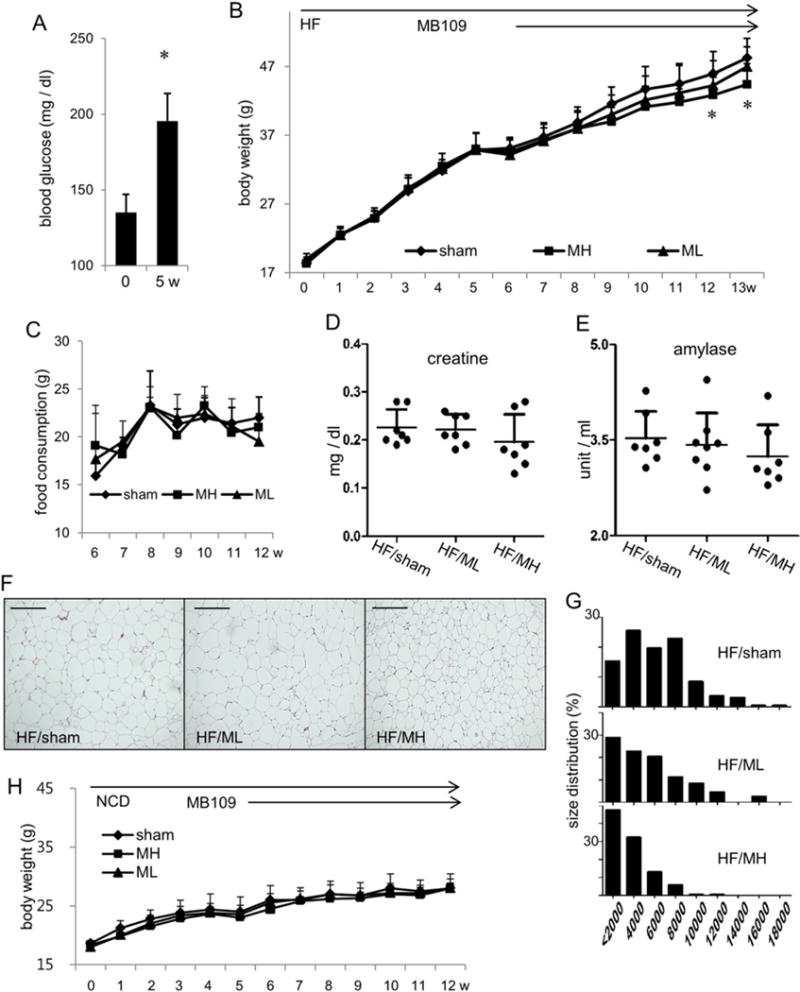Fig. 1.

MB109 suppresses weight gaining of high fat diet-induced obese mice in a dose-dependent manner. (A) 7-h fasting blood glucose levels of mice on high fat diet were analyzed. (B) Body weight changes of mice fed with high fat diet were observed for 13 weeks. Injection of vehicle (PBS), or ML or MH was performed from 5th week of high fat diet. Changes in body weights by administration of MH were statistically significant from 12th week (p < 0.05). (C) Changes in food consumption per mouse for 7 weeks are shown. Circulating serum levels of creatine (D) and amylase (E) were analyzed at the termination of the experiment. A serum level of each molecule from each mouse was displayed as a dot. (F) Representative H&E staining of the subcutaneous adipose tissues of animals with average body weights in each group. Scale bars indicate 100 μm. (G) Percentage distribution of cross-sectional areas of adipocytes from each group is shown. An x-axis represents areas of adipocytes in μm2. (H) Body weight changes of mice fed with normal chow diet were observed for 12 weeks. Injection of vehicle (PBS), or ML or MH was performed from 5th week of normal chow diet.
